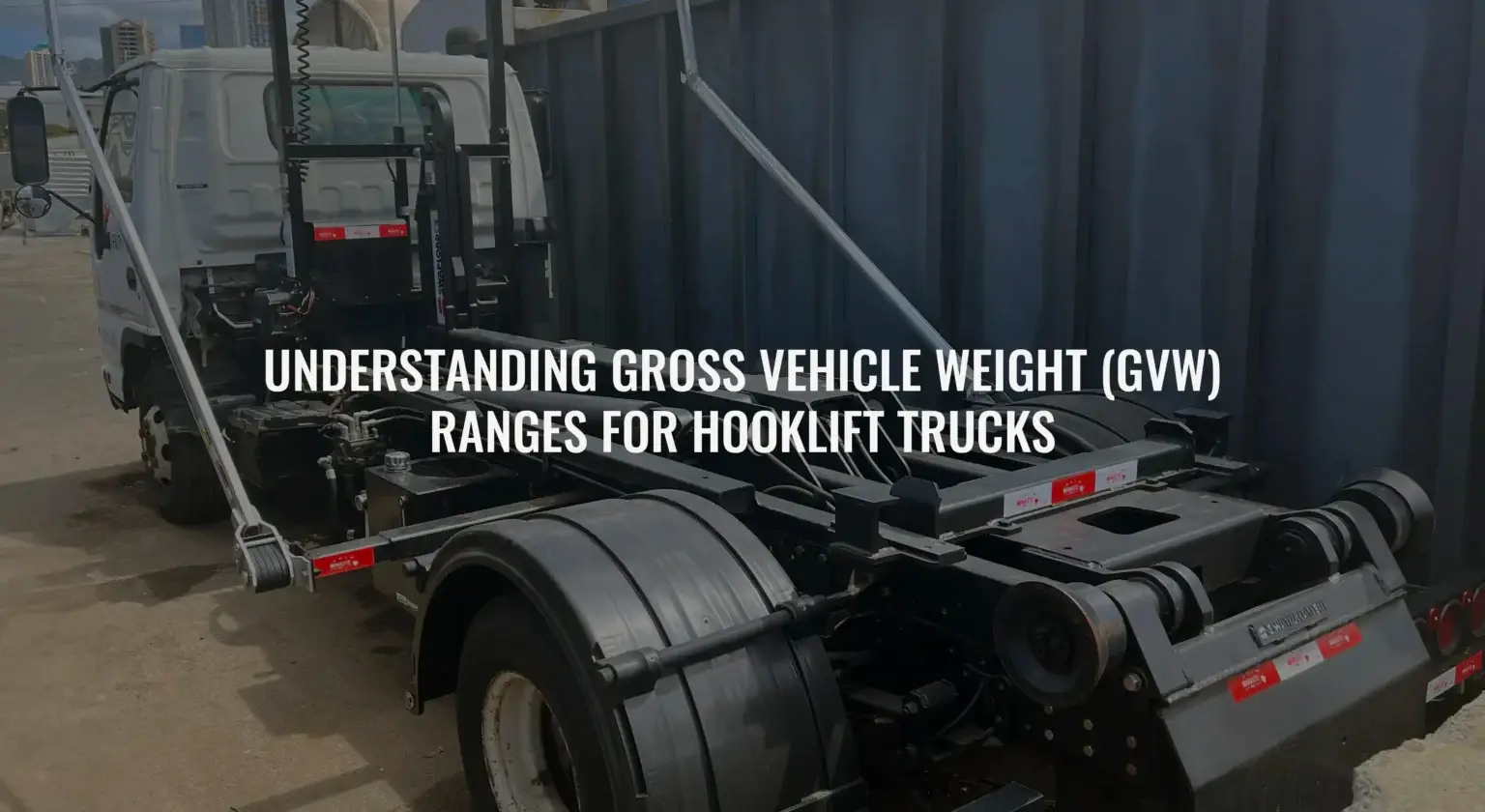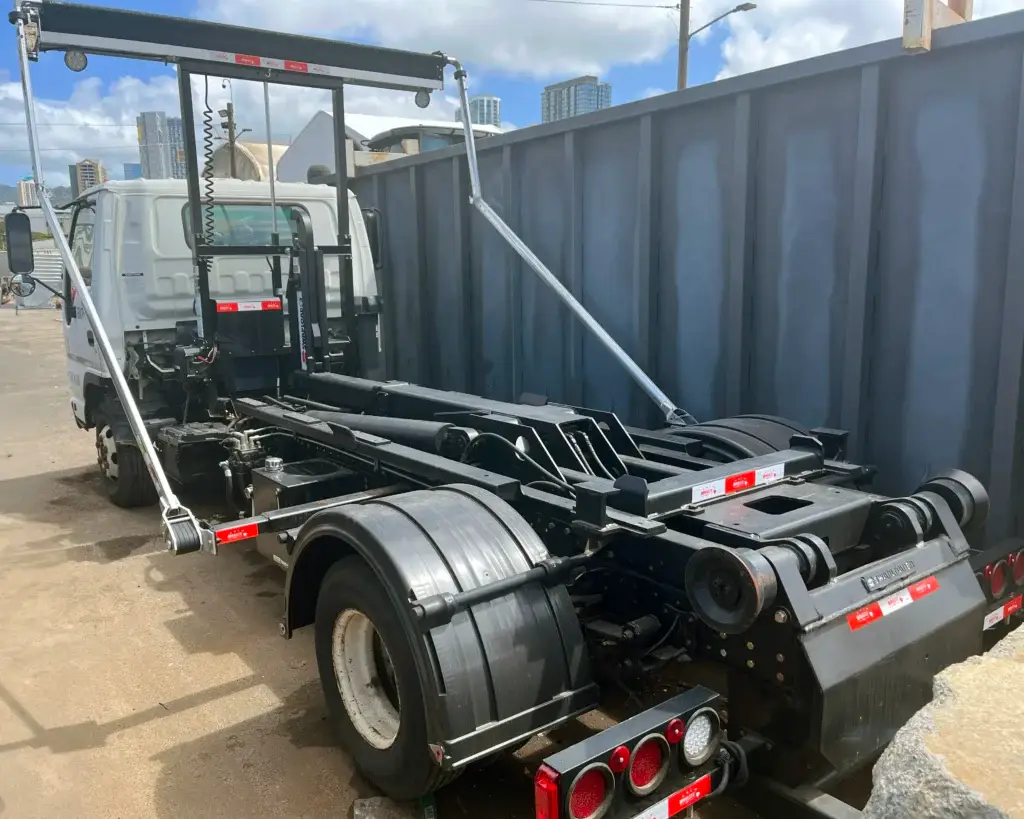
When selecting a hooklift truck for your business in Hawaii, understanding the Gross Vehicle Weight (GVW) is crucial. GVW refers to the maximum weight a truck can safely carry, including its own weight, the hooklift system, and the load it carries. Hooklift trucks come in various GVW ranges, each suited for different applications and capable of carrying different sizes of hooklift dumpsters, flatbeds, and contractor beds. This blog will break down these ranges, including whether a Commercial Driver’s License (CDL) is required in Hawaii, and which CDL class is necessary to help you choose the right hooklift truck for your needs.
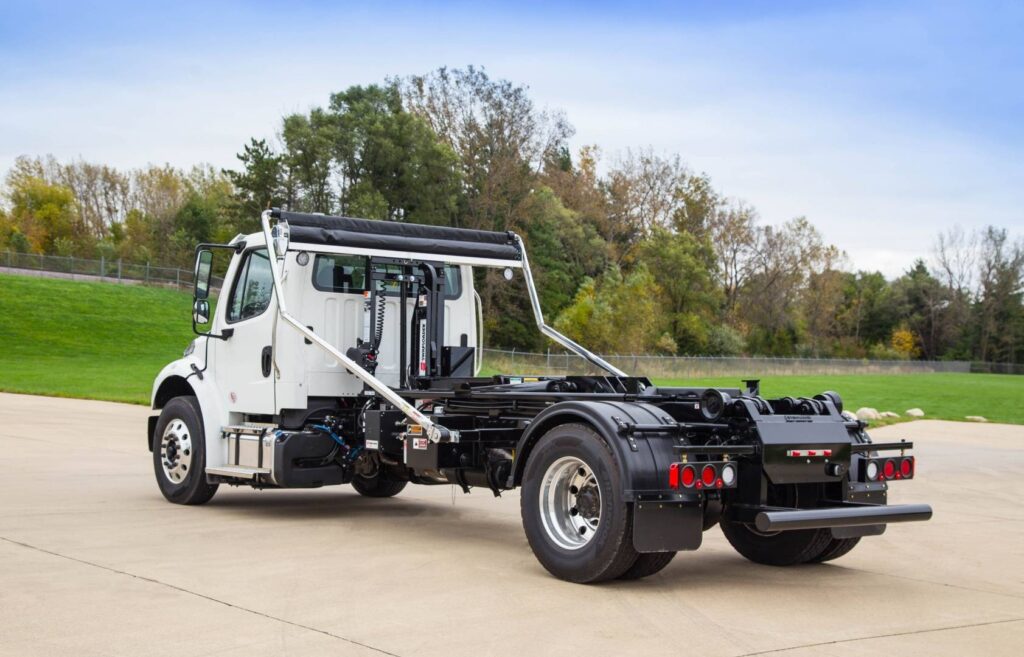
1. GVW Range: 14,000 – 25,000 lbs
Overview:
- Ideal for light-duty tasks and smaller loads.
- Commonly used in urban environments with tight spaces.
- License Requirement in Hawaii: Non-CDL for vehicles 26,000 GVW and under
Applications:
- Residential waste collection
- Small construction projects
- Landscaping and gardening waste
Ideal Hooklift Dumpsters:
- 10 cubic yards
- 15 cubic yards
Advantages:
- Better fuel efficiency
- Easier to maneuver in congested areas
- Lower operational costs
Considerations:
- Can be operated without a CDL license for vehicles under 26,000 GVW
- Limited load capacity
- Not suitable for heavy-duty industrial tasks

2. GVW Range: 25,000 – 35,000 lbs
Overview:
- A versatile range suitable for medium-duty applications.
- Provides a balance between load capacity and maneuverability.
- License Requirement in Hawaii: CDL Class B
Applications:
- Municipal waste collection
- Medium-sized construction and demolition projects
- Transportation of moderate-weight materials
Ideal Hooklift Dumpsters:
- 15 cubic yards
- 20 cubic yards
Advantages:
- Increased load capacity compared to light-duty trucks
- Suitable for a wider range of applications
- Moderate operational costs
Considerations:
- Requires a CDL Class B
- Increased fuel consumption compared to lighter trucks
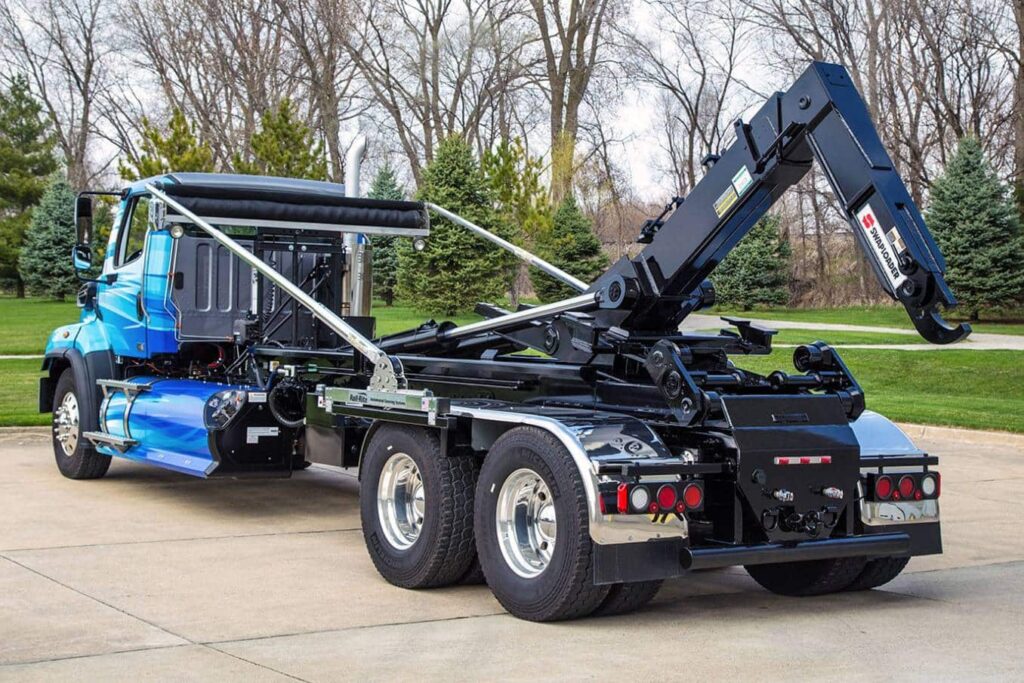
3. GVW Range: 35,000 – 55,000 lbs
Overview:
- Heavy-duty trucks designed for substantial loads.
- Often used in industrial and large-scale construction projects.
- License Requirement in Hawaii: CDL Class B
Applications:
- Heavy construction and demolition debris
- Large-scale waste management
- Transporting heavy machinery and equipment
Ideal Hooklift Dumpsters:
- 20 cubic yards
- 30 cubic yards
Advantages:
- High load capacity
- Durability and strength for tough tasks
- Suitable for demanding environments
Considerations:
- Requires a CDL Class B
- Higher operational and maintenance costs
- Requires skilled operators
- Limited maneuverability in tight spaces
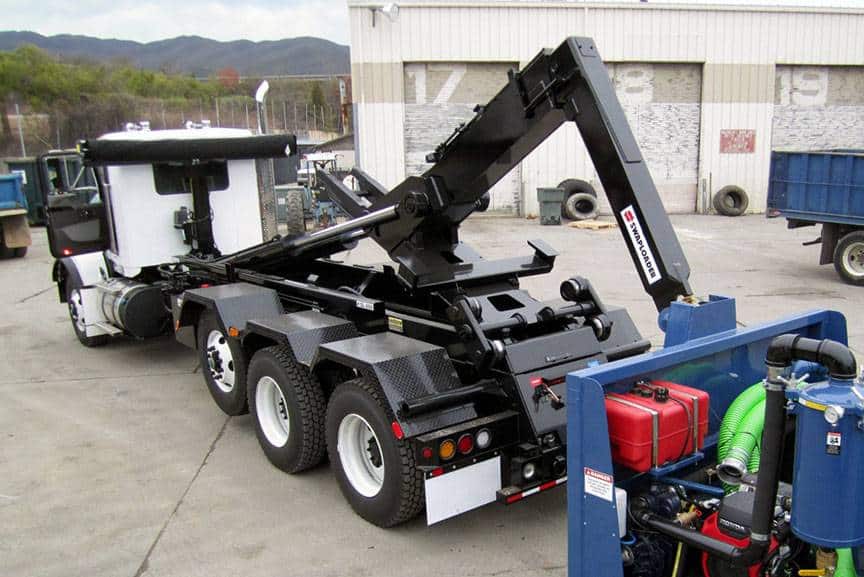
4. GVW Range: 55,000+ lbs
Overview:
- The highest GVW range for the most demanding applications.
- Designed for extreme loads and heavy-duty tasks.
- License Requirement in Hawaii: CDL Class B
Applications:
- Major construction and infrastructure projects
- Transport of extremely heavy industrial equipment
- Specialized waste management tasks
Ideal Hooklift Dumpsters:
- 30 cubic yards
- 40 cubic yards
Advantages:
- Maximum load capacity
- Built for the toughest jobs
- Exceptional durability
Considerations:
- Requires a CDL Class B
- Highest operational and maintenance costs
- Requires specialized operators and equipment
- Least maneuverable in confined areas
Understanding CDL Classes
In Hawaii, there are different classes of CDLs required based on the GVW and type of vehicle:
- Class A: Required for any combination of vehicles with a GVWR of 26,001 lbs or more, provided the GVWR of the trailer exceeds 10,000 lbs. This is typically required for heavy-duty hooklift trucks in the 35,000 – 55,000 lbs and 55,000+ lbs ranges.
- Class B: Required for any single vehicle with a GVWR of 26,001 lbs or more, or any such vehicle towing another vehicle not in excess of 10,000 lbs GVWR. This class is generally needed for medium-duty hooklift trucks in the 25,000 – 35,000 lbs range (Driving-Tests.org) (Honolulu Gov).
Weight Breakdown for Hooklift Dumpsters
Understanding the approximate weights associated with each size of hooklift dumpster and the maximum weight they can carry is essential for selecting the appropriate hooklift truck based on its GVW. Here’s a detailed breakdown of the common hooklift dumpster sizes, their approximate empty weights, and their maximum load capacities.
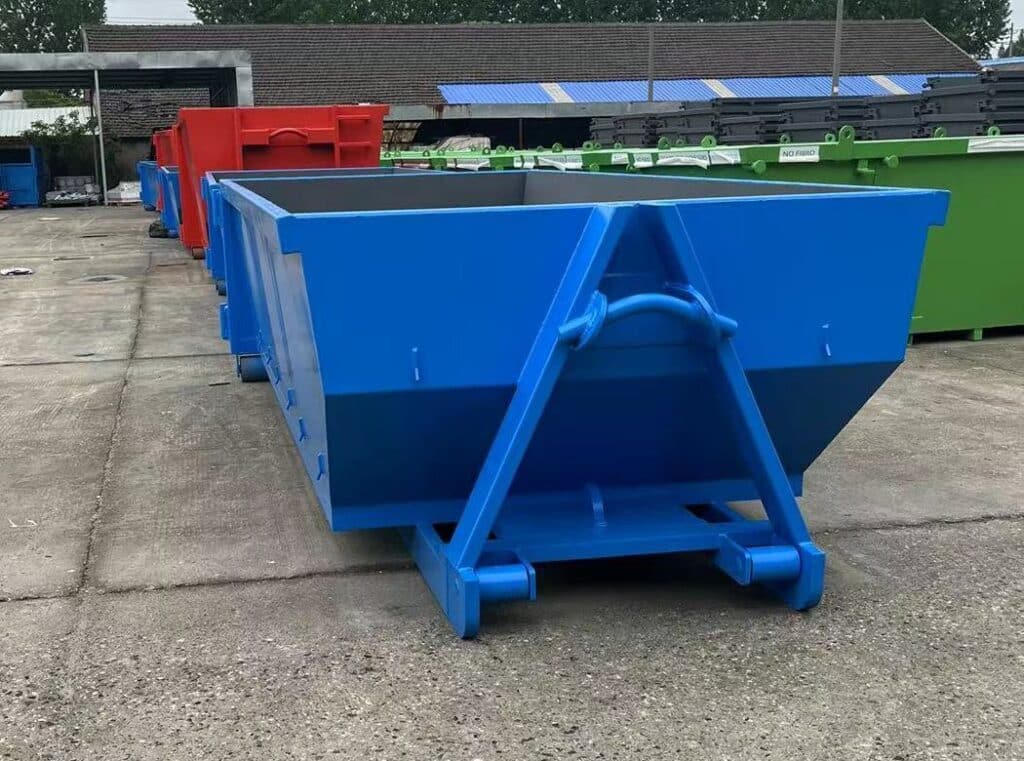
10 Cubic Yard Hooklift Dumpster
Empty Weight: Approximately 1,500 – 2,000 lbs
Max Load Capacity:
- Standard debris: 4,000 – 6,000 lbs
- Heavy debris (e.g., concrete): Up to 10,000 lbs (limited by GVW and safety considerations)
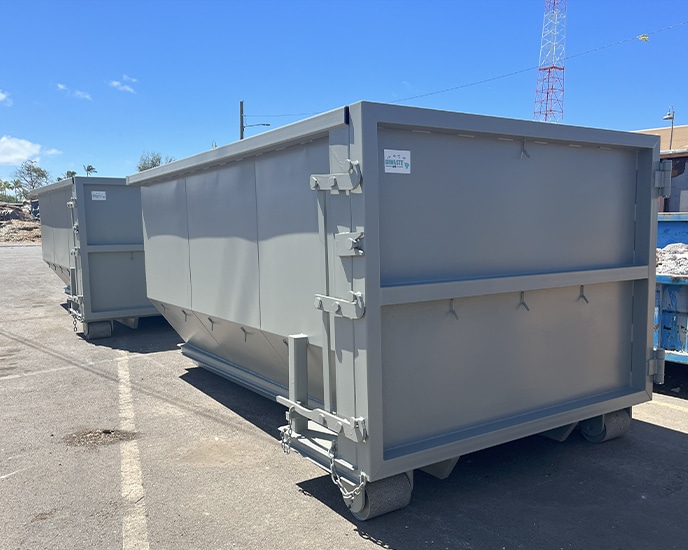
15 Cubic Yard Hooklift Dumpster
Empty Weight: Approximately 2,000 – 2,500 lbs
Max Load Capacity:
- Standard debris: 4,000 – 6,000 lbs
- Heavy debris (e.g., concrete): Up to 10,000 lbs (limited by GVW and safety considerations)
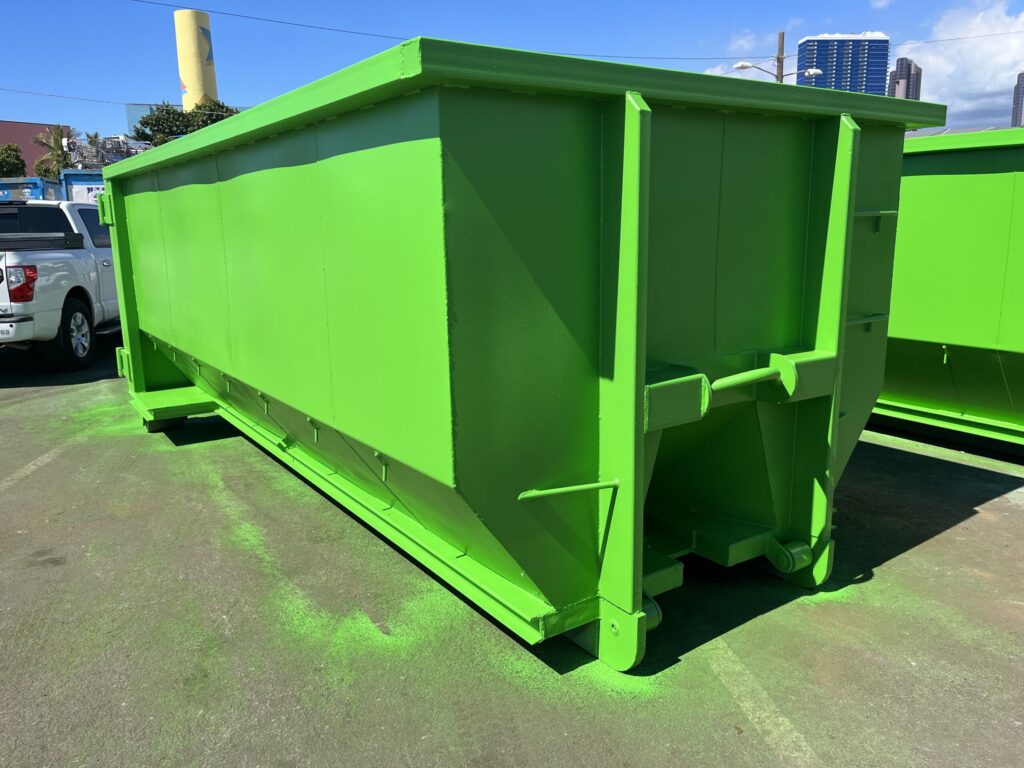
20 Cubic Yard Hooklift Dumpster
Empty Weight: Approximately 3,000 – 3,500 lbs
Max Load Capacity:
- Standard debris: 6,000 lbs
- Heavy debris (e.g., concrete): Up to 10,000 lbs (limited by GVW and safety considerations)
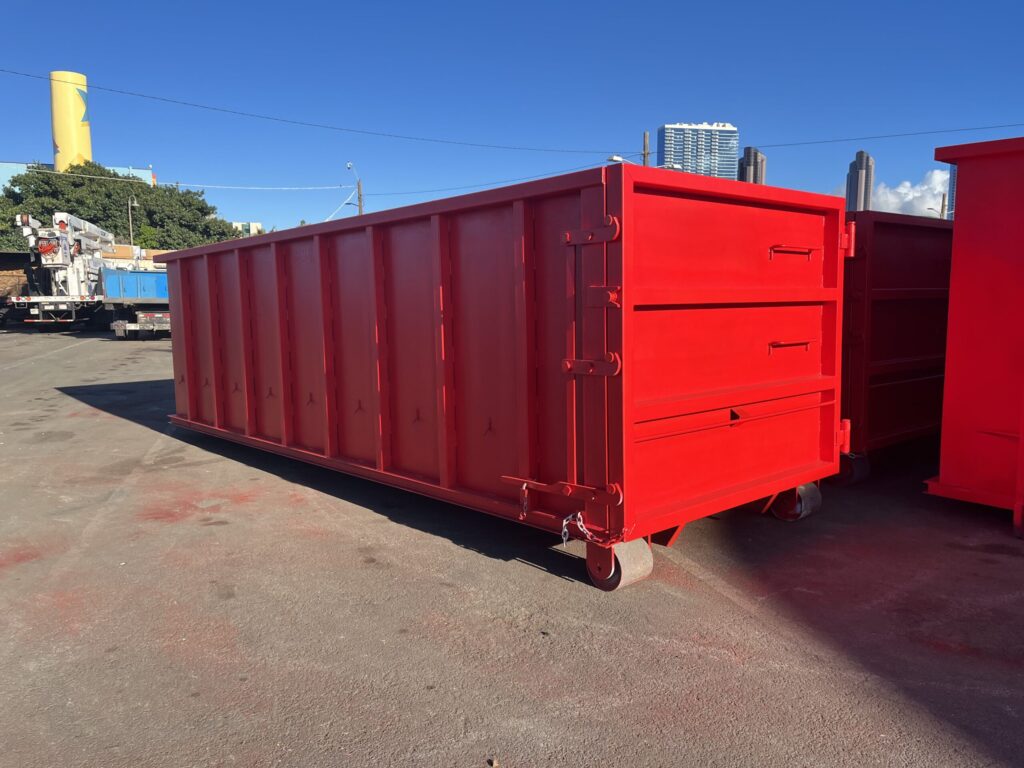
30 Cubic Yard Hooklift Dumpster
Empty Weight: Approximately 4,000 – 4,500 lbs
Max Load Capacity:
- Standard debris: 7,000 – 10,000 lbs
- Heavy debris (e.g., concrete): Up to 10,000 lbs (limited by GVW and safety considerations)
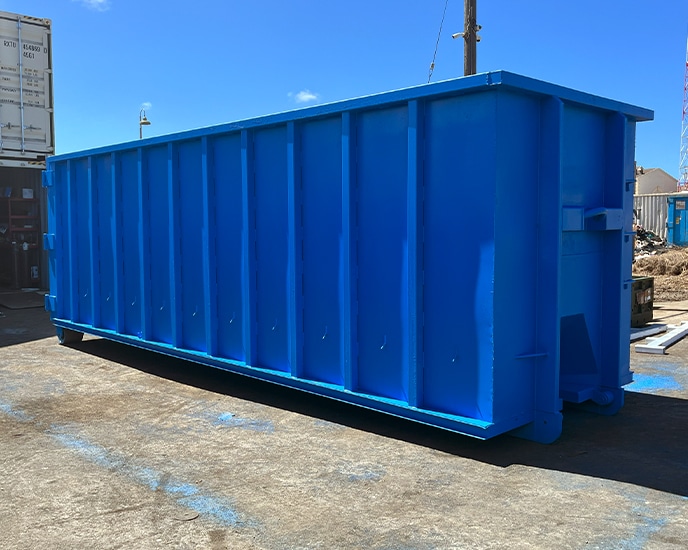
40 Cubic Yard Hooklift Dumpster
Empty Weight: Approximately 5,000 – 6,000 lbs
Max Load Capacity:
- Standard debris: 10,000 – 12,000 lbs
- Heavy debris (e.g., concrete): Up to 10,000 lbs (limited by GVW and safety considerations)
Example Calculations for GVW Ranges
To understand how these weights factor into the GVW:
- For a 20,000 lbs GVW Truck:
- Empty Truck Weight: Approx. 8,000 lbs
- 20 Cubic Yard Dumpster:
- Empty weight: 3,500 lbs
- Max load: 8,500 lbs (remaining weight capacity within GVW)
- For a 35,000 lbs GVW Truck:
- Empty Truck Weight: Approx. 15,000 lbs
- 30 Cubic Yard Dumpster:
- Empty weight: 4,500 lbs
- Max load: 15,500 lbs (remaining weight capacity within GVW)
- For a 55,000 lbs GVW Truck:
- Empty Truck Weight: Approx. 20,000 lbs
- 40 Cubic Yard Dumpster:
- Empty weight: 6,000 lbs
- Max load: 29,000 lbs (remaining weight capacity within GVW)
Conclusion
Selecting the right hooklift truck and dumpster size combination depends on your specific load requirements and the GVW of the truck. By understanding the empty weights and maximum load capacities of different dumpster sizes, you can ensure that your operations are efficient, safe, and within legal weight limits. Always consider the type of material being hauled and the total GVW of the vehicle to make the best choice for your needs.
For further assistance or detailed calculations specific to your operations, feel free to contact us. We’re here to help you find the perfect solution for your business needs.

